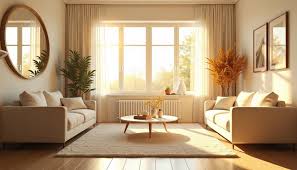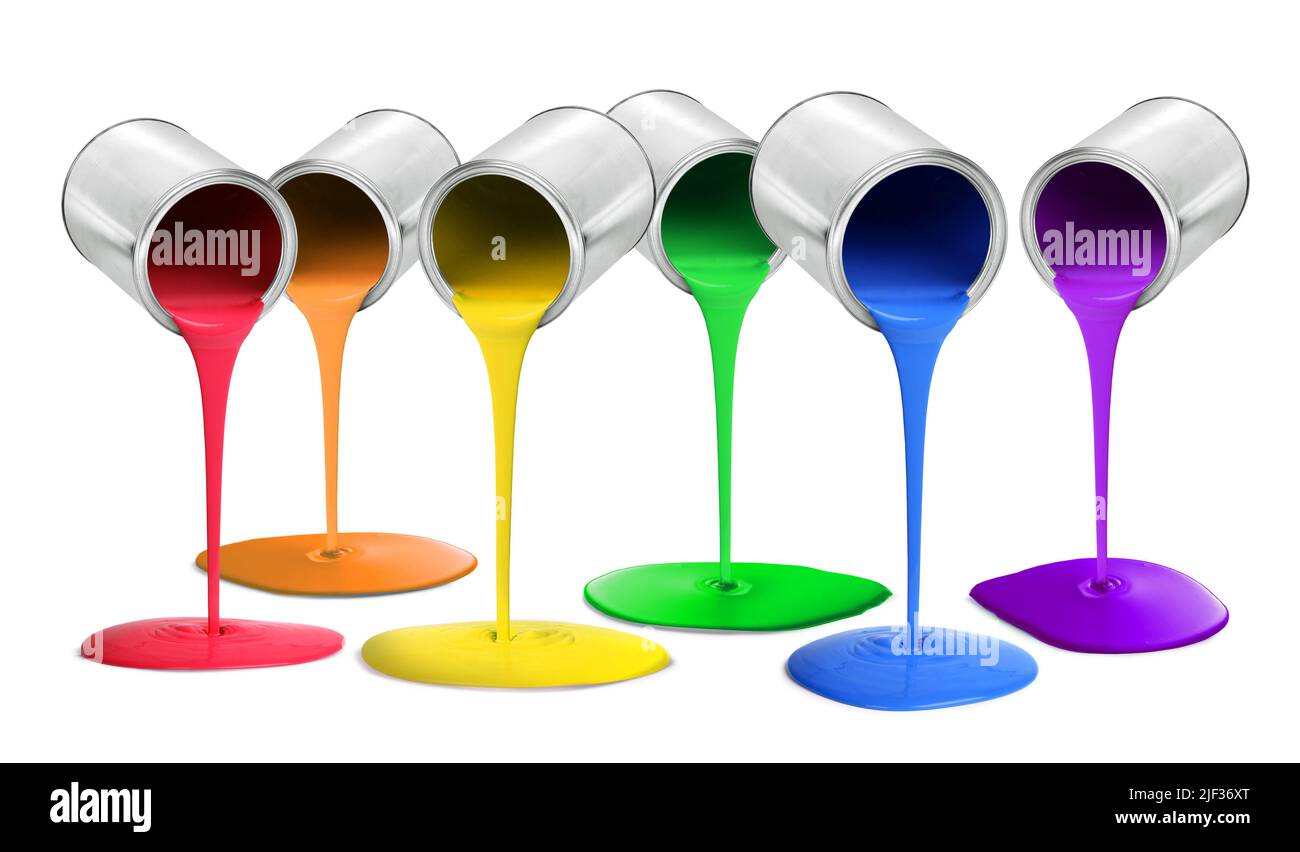How to Choose the Perfect Paint Color for Every Room
Choosing the right paint color can transform a space, setting the mood, defining the room’s purpose, and even influencing your emotions. Whether you’re designing a cozy bedroom, a vibrant living room, or a calming bathroom, the right color choice is essential to achieving the look and feel you want. But with thousands of shades available, selecting the perfect one can feel overwhelming. This guide will walk you through practical steps and expert tips to help you choose the perfect paint color for every room in your home.
1. Understand the Room’s Function
Before you pick up a paint swatch, consider what the room is used for. Each room has a different function, and your color choice should enhance that.
- Living Room: Often a social and relaxing space, it can handle warm, inviting tones like taupe, soft greens, or warm greys.
- Bedroom: A restful place that benefits from calming hues like light blues, soft lavenders, and pastel tones.
- Kitchen: A high-energy room where bright and fresh colors like white, yellow, mint, or sage green can work wonders.
- Bathroom: Best with light, clean colors such as whites, greys, seafoam green, or pale blue for a spa-like feel.
- Home Office: Needs focus and energy, so go for soft greens, muted blues, or light neutrals.
Matching the paint color with the function of the room ensures harmony and usability.
2. Consider the Room’s Natural Light
Lighting has a massive impact on how paint looks on your walls. A color that looks beige in one room may appear grey in another depending on the light source.
- North-facing rooms receive cooler light, making colors appear darker. Warm tones like creamy whites, blushes, or terracotta can offset this.
- South-facing rooms have abundant natural light, making colors appear brighter. You can use both cool and warm shades here.
- East-facing rooms get soft morning light, which enhances warm and light colors.
- West-facing rooms glow warmly in the evening, making reds, oranges, and warm neutrals shine.
Always test paint samples on different walls and observe them throughout the day.

3. Take Cues from Existing Elements
Look at your flooring, furniture, countertops, and permanent fixtures like tiles or cabinetry. These elements are often expensive and not easily changed, so your paint color should complement them.
- For wood floors, warm tones like caramel or beige can enhance the richness of the wood, while cooler tones like greys can provide contrast.
- With white or neutral furniture, you have the freedom to choose bolder wall colors for contrast.
- If your kitchen has colorful backsplash tiles, pick a wall color that either matches a shade in the tile or contrasts tastefully.
Use color wheels and design swatches to ensure your choices blend cohesively with the room’s existing palette.
4. Decide on the Mood You Want
Color influences mood and emotion, so pick shades based on how you want to feel in the space.
- Blue: Calming and serene—perfect for bedrooms or bathrooms.
- Yellow: Cheerful and energetic—great for kitchens or breakfast nooks.
- Green: Refreshing and balanced—ideal for living rooms and offices.
- Red: Bold and stimulating—suitable for dining rooms or accents.
- Gray: Sophisticated and flexible—fits well in modern, minimalist spaces.
Use saturated colors for dramatic effect or softer tints for a subtler ambiance.

5. Choose a Color Flow for Your Home
If your home has an open floor plan or connected rooms, think about how each room flows into the next. You don’t want clashing colors or jarring transitions.
- Use a cohesive color palette throughout the home. Choose one base neutral and add color variations as accents.
- Try the 60-30-10 rule: 60% of a dominant color, 30% of a secondary color, and 10% as an accent.
- Consider using different shades of the same color in adjoining rooms for a subtle and unified look.
Consistency enhances harmony and makes your home feel intentional and well-designed.
6. Test Before You Commit
Paint stores offer hundreds of options, but colors can look very different when applied to a wall. Always test before committing.
- Use sample pots to paint a section of the wall or apply large peel-and-stick paint swatches.
- Test on multiple walls to see how the color reacts to different lighting throughout the day.
- Observe for at least 2-3 days before making a decision.
This simple step can save time, money, and potential disappointment.
7. Don’t Forget the Finish
The finish of your paint affects both the look and durability of your walls. Choose the right one for each room:
- Matte/Flat: Offers a soft, non-reflective finish, good for low-traffic areas like bedrooms.
- Eggshell: Slightly more durable than flat and ideal for living rooms and dining areas.
- Satin: Easy to clean, making it great for kitchens, bathrooms, and hallways.
- Semi-gloss: Shiny and durable, best for trim, doors, and cabinets.
- Gloss: Very shiny and highly durable, though it shows imperfections easily.
Match the finish with the room’s function and desired visual texture perfect Paint color for Every Room.
8. Use Neutrals Creatively
Neutrals don’t have to be boring. They can act as a sophisticated backdrop or provide balance for bolder colors.
- White comes in various undertones—cool, warm, or pure. Choose the one that works with your room’s palette.
- Greige (grey + beige) is an excellent modern neutral, offering warmth and versatility.
- Taupe and tan can create a cozy, earthy feel, especially paired with natural materials like wood and linen.
Layer neutrals with different textures and accents for depth and interest perfect Paint color for Every Room.
9. Get Inspired by Nature or Art
Sometimes, the best inspiration comes from the world around you. A walk in nature, a piece of fabric, or a favorite artwork can spark ideas.
- Bring in colors from beach scenes, like sandy beige, sky blue, and seafoam green.
- Draw from a floral print, picking one bold shade and a few softer ones.
- Use artwork or decorative pieces as a color palette foundation.
Let something you love guide your paint choices, giving the room personality and uniqueness perfect Paint color for Every Room.
10. Seek Professional Help if Needed
If you’re still unsure, don’t hesitate to consult a color consultant or interior designer. Many paint companies offer virtual paint tools and consultation services that can help you visualize the finished product before you start.
11. Think Beyond the Walls
When people think of paint, they usually focus only on the walls. But ceilings, trims, doors, and even furniture can benefit from a splash of color.
- Ceilings: Often called the “fifth wall,” painting the ceiling a lighter shade of your wall color can create a seamless, expansive look. For drama, use darker or contrasting tones.
- Trim and Molding: Crisp white is classic, but don’t be afraid to try black, navy, or even a bold color for contrast and modern appeal.
- Accent Walls: A single wall in a deeper or brighter color can add focus and depth to a room without overwhelming it.
- Painted Furniture: Revive old furniture with paint that complements or contrasts your room’s palette.
Being creative with paint placement enhances visual interest and can help tie together your interior design theme.
12. Popular Paint Color Trends
While personal taste should drive your decision, staying informed about current trends can provide inspiration and a modern touch to your spaces.
- Earthy Tones: Warm browns, terracotta, olive green, and sand tones are trending for their grounded and cozy feel.
- Muted Pastels: Soft blush, sage green, and dusty blue are becoming popular for their calming effects and versatility.
- Dark & Moody Hues: Deep navy, charcoal, and forest green create dramatic, sophisticated spaces, especially in dining rooms, libraries, and bedrooms.
- Warm Neutrals: Greige, ivory, and creamy whites are timeless and work well in minimalist and traditional spaces alike.
Remember that trends should inspire, not dictate, your final choice.
13. Use the Psychology of Color
Color psychology explores how hues impact mood and behavior. Understanding this can guide your decisions, especially for rooms where emotions matter most.
- Warm Colors (red, orange, yellow): Energizing and stimulating; great for social areas like dining rooms and kitchens.
- Cool Colors (blue, green, purple): Calming and soothing; ideal for bedrooms, bathrooms, and meditation spaces.
- Neutrals (white, grey, beige): Balanced and flexible; perfect for creating peaceful environments or backgrounds for bold décor.
Choose colors based on how you want people to feel in each space—not just how you want it to look perfect Paint color for Every Room.
Lighting Tips to Highlight the Perfect Paint Color for Every Room
14. Small Room? Use Color to Your Advantage
If you’re working with small spaces, your paint choice can make a big difference in how open or closed a room feels.
- Light Colors: Whites, light blues, and pastels reflect more light and make rooms feel bigger and airier.
- Dark Colors: Can be used in small rooms too! When paired with good lighting and light-colored furniture, they add drama and coziness without necessarily shrinking the space.
- Vertical vs. Horizontal: Use horizontal stripes to widen a narrow space or vertical stripes to make ceilings feel taller.
Strategic use of paint can visually reshape your room and create the illusion of more space for Perfect Paint color for every Room.
15. Coordinate With the Whole House
Think of your house as a connected unit. Even if rooms serve different purposes, a well-coordinated palette will make the home feel cohesive and well thought-out.
- Use a Color Wheel: Choose complementary (opposite on the wheel), analogous (next to each other), or triadic (three equally spaced) colors for variety that still harmonizes.
- Create a Color Story: Pick a few main colors and repeat them throughout different rooms in varying intensities or finishes.
- Avoid Overload: Too many bold or clashing colors can feel chaotic. Balance bright spaces with calm, neutral ones to give the eye a place to rest.
A balanced, unified palette makes your home feel professionally designed—even if you did it yourself.
Final Tip
Remember: You can always repaint. perfect Paint color for Every Room Don’t be afraid to experiment and try something new. Start small, test samples, and let your personality shine through the colors you choose. Paint is one of the most cost-effective ways to refresh your home and reflect your style.
For Expert Advise click here to Get in touch with us
- Finding the perfect paint color for every room starts with understanding your space’s lighting and function.
- Interior designers often recommend selecting the perfect paint color for every room based on mood and lifestyle.
- Don’t guess—test the perfect paint color for every room using sample swatches under real lighting.
- The perfect paint color for every room should harmonize with your furniture, flooring, and natural light.
- Using color psychology helps in selecting the perfect paint color for every room to enhance its atmosphere.
- Even ceilings and trims can contribute to the perfect paint color for every room when coordinated well.
- Trendy palettes can inspire your search for the perfect paint color for every room, but timeless shades often work best.
- Choosing the perfect paint color for every room isn’t just about aesthetics—it’s about functionality too.
- Make sure your chosen palette flows well to maintain the perfect paint color for every room throughout your home.
- Visual tools and apps can help you visualize the perfect paint color for every room before committing.
